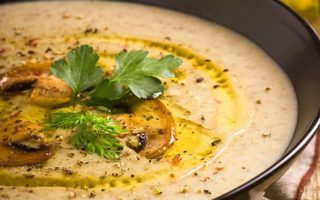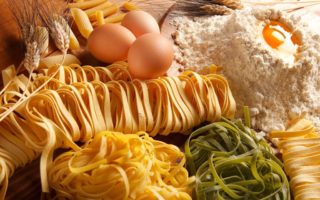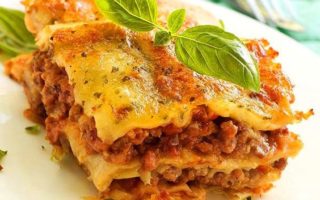Our Ultimate Guide To Food And Wine Tasting In Tuscany
 |
| Photo credit: Casa Chianti Classico |
It’s no secret that the Italians have a loving relationship with their food. I’m not just talking about the owners of prestigious restaurants, trattorie, or osterie. Sit yourself down at any Italian table and you’ll be amazed at the amount of detail your cook will be delighted to go into when describing what, to us mere mortals, seems like a basic (though admittedly delicious) pasta dish.
The typical gastronomic presentation will go something like this. Firstly, your host will outline the geographical origins of each individual ingredient (“freshly picked tomatoes from the foot of Vesuvius”) no matter how basic or complex the dish. Secondly, they will proudly set forth the recipe’s generational genealogy (“just as my grandmother learned from her grandmother”) to legitimise the dish’s authenticity. Finally, they will divulge the culinary techniques that bring each ingredient together to form the final dish. Well, at least those they’re happy to share.
 |
| Pappa al pomodoro. Photo credit: Cucchiaio d’Argento |
Most people visiting Italy will soon come to realise that this stereotype rings true up and down the country. Fewer people, however, will tell you that it rings infinitely truer in the countryside. It might be something about the main sites and the crowds they draw, but in the hustle and bustle of the big cities—Rome, Florence, Naples, and Milan—you really do lose something of that Italian intimacy with their culinary culture.
As someone who’s lived in Florence for the past few years, believe me when I say that there’s more to Tuscany than its monuments. Don’t get me wrong, Florence’s Duomo and Accademia; the Leaning Tower of Pisa; the Piazza del Campo of Siena—all of these must be visited at least once in one’s lifetime. But visual treats aside, the low-hanging fruits for the palette are to be found on the borders of these cities in Chianti (or Chiantishire as us aspirational Brits like to call it): a landscape of rolling hills, olive groves, and bursting vineyards.
The rolling landscape near Siena. Photo credit: Si Weddings in Italy
No holiday in Italy is complete without a journey into the countryside to sample some of Italy’s freshest local produce and sip some wine produced from some of the finest vines in the world. The Tuscan countryside is waiting to be explored. Let us at Roman Candle Tours share with you our expert itinerary to help you explore it.
Greve in Chianti Wine Tasting
Piazza Matteotti in Greve in Chianti. Photo credit: A Road Retraveled
For most travellers venturing south from Florence, the first stop on the Tuscan country trail is the small medieval village of Greve in Chianti. It’s situated about 20 miles outside the city, and although you can get there by SITA bus you’re best off either hiring your own car or letting us arrange for you a private driver. Get here early on a Saturday (between 8am – 1pm) and you’ll have the chance to lose yourself in a local produce market that’s been a feature of Greve’s main piazza for centuries. But whatever you do, make time for the village’s main culinary attraction: Antica Marcelleria Falorni.
Antica Marcelleria Falorni. Photo credit: Made in Tuscany
No trip to Greve would be complete without ducking into Marcelleria Falorni (open every day from 10am – 7pm). Not only is it one of the oldest and most famous butcher shops in Italy, fully equipped out with its own splendidly stocked wine cellar, but it also doubles up as an unassuming osteria (bistro) serving arguably the best food in Greve.
Falorni’s cheese and meat platter. Photo credit: Trip Advisor
Stock up on as many gastronomic delights as your luggage will allow, or feast your way through one of their mouth-watering platters of cured meats, cheeses and local jams and honeys (or indeed do both!). The platters go down exceptionally with a glass or two of locally sourced Chianti, brought straight up from Falorni’s centuries-old cellar. In the summer months, park yourself outside on the piazza and watch the world go by. In the winter months, bathe in the bistro’s glowing warmth and gorge yourself into hibernation.
When to visit Greve in Chianti
Greve in Chianti’s annual wine festival. Photo credit: Tuscan Feeling
The best time to visit Greve is in September. Not only is it best in terms of weather—still very much the Italian summer, though fortunately by this stage more fresh than stifling—but on the second weekend of the month, and the Thursday and Friday before, the village square plays host to the annual Chianti Classico expo.
After arming yourself with an empty glass, you’re free to wander around the square and try as much locally produced wine as you like. If you don’t want to come in September that’s no problem: Greve is worth visiting all year round, and fortunate to be far enough outside Florence that crowding is never a problem.
Castellina in Chianti
The beautiful landscape of Chianti. Photo credit: Chianti.com
Meaning “little castle” in Italian, the hilltop city of Castellina in Chianti came into being as the result of the centuries-long feud between Florence to the north and Siena to the south. Because it was on the frontline of the struggle between these two great powers, Castellina constantly changed hands; the city walls strengthened every time it did. Eventually, in the fifteenth century, it fell under Florentine control and became a stronghold (the form of which it retains to this day).
Every year at the beginning of June, Castellina plays host to one of the viticulture events of the Italian calendar year: the Pentecoste. As you’d expect from an event put on by the Chianti Classico Consortium, quality-wise the Pentecoste is one of the best wine festivals in Italy. But it’s also one of the most atmospheric: with the local philharmonic orchestra providing the background music, the festival makes its way throughout the town to culminate on the Via delle Volte—a vaulted arch road that circumvents the city from just beneath its fifteenth century walls.
One of the restaurants lining the Via delle Volte. Photo credit: Quandoo
While you’re in the area, you must make a point of visiting Casa Chianti Classico. Housed within a converted eighteenth century Franciscan convent, the building alone is beautiful enough to justify the 20-minute drive from Castellina. And that’s to say nothing of what they’ve got going on inside.
Cooking classes, wine-tasting sessions, and guided tours of their permanent Chianti Classico exhibition are just a few of the many events they run every year from April to October. Don’t worry if you’re planning on visiting out of season though. Contact ustoday and we’ll organise a private tour and driver to take you round—so you can sample their exquisite Chianti to your heart’s content!
Monteriggioni Wine Tasting
Monteriggioni. Photo credit: Visit Tuscany
Another fortified settlement dominating an otherwise serene landscape, Monteriggioni was built by the Sienese as their frontline of defence against Florentine aggression. It’s easy to see why they chose this spot. From its commanding hilltop position, the walled medieval town looks out across the wooded Tuscan countryside from every direction.
Not that this stopped the dogged Florentines from trying to take it. From the thirteenth right through to the sixteenth century, the Florentines attacked again and again, leaving a lasting physical legacy on Monteriggioni’s stone walls. But though the town itself has retained the character of its medieval past (not least through the Medieval Festival it puts on each year at the beginning of July), the area that surrounds has come to be known more famously for the fine quality of its food and wine.
Bar dell’Orso. Photo credit: Bar dell’Orso
Surprisingly, it’s actually at a bar just outside Montereggioni’s walls (bar, in Italian, meaning anything from a place to grab a coffee to a fully-stocked eatery) that you can find the best culinary and vinous offerings in the area. It might not look like much from the outside, but such is the reputation that’s grown up around Bar dell’Orso that it’s almost guaranteed to come up in conversation whenever either Montereggioni or Siena is mentioned.
For a start, the portion sizes at the Bar of the Bear (as its name translates) are large enough to send even hungriest of carnivorous mammals into blissful hibernation. More importantly, in delivering such quantity it loses nothing of the quality: prosciutto, mortadella, Cinta Senese salami, finocchiona… these are just a few of delicious offerings you’re likely to find on your meat platter alone.
Typical meat platter at Bar dell’Orso. Photo credit: Bar dell’Orso
And the cured meat and cheese platters are just one side of the story at Bar dell’Orso. This rural gem also serves up traditional, home-cooked pasta dishes (including papardelle with wild boar ragù, ravioliwith truffle sauce, and pici with cheese and pepper), main courses of exquisite red meat and local game, and freshly prepared desserts: the calibre of which make Bar dell’Orso a household name across Tuscany. Want to see for yourself? Check out the images on their menu.
Montalcino Wine Tasting
Sweeping views over the Tuscan countryside. Photo credit: LetitWine
Drive an hour south from Siena, across folding hills and winding rivers, and you’ll come across the medieval hill-town of Montalcino—a historical settlement that’s aged almost as well as the wines produced in the surrounding area. It’s a deceptively affluent town, nurtured by the trickling effects of both local and international tourism. But it’s not so much the fourteenth century fortress or the Museum of Montalcino that continues to draw in visitors as its world famous DOCG wine: Brunello of Moncalcino.
Wherever you wander within the town’s medieval walls, you’re bound to venture upon modest, small-scale wine shops (enoteche) stocked full of world-class, reasonably priced red and white wines from the surrounding countryside. But for the real wine and food tasting experience you want to head 20 minutes southeast of the town, deep into the heart of the Tuscan countryside, to Castello Banfi La Taverna.
Castello Banfi and its remarkable estate. Photo credit: Hello Taste
Set on a 7,000-acre estate, Castello Banfi is both the largest producer of Brunello di Montalcino and—by common consent of those who know the region well—the best. You can visit its well-stocked winery on a tour (sampling, it goes without saying, is both included and encouraged). But don’t even think about doing it on an empty stomach, especially when you have Banfi’s world-class gourmet restaurant right on your doorstep.
Just one example of Banfi’s gourmet offerings. Photo credit: Castello Banfi il Borgo
Specialising in good, honest Tuscan cuisine, the taverna is particularly well reputed for its pinci al ragù, a local take on the thick, spaghetti-like pici pasta from Siena coated in a wild boar meat sauce, and its Bistecca alla Fiorentina, probably the best cut of rare T-bone steak you’ll ever taste. If you’re looking for something lighter, they also do a cured meat and pecorino cheese platter with local jams and honeys. And if it’s variety that you’re going for instead, look no further than Banfi’s three-course taster menu. It truly is the stuff of dreams.
Roman Candle Tours in Tuscany
View over Florence from Piazzale Michelangelo
When it comes to Tuscany, we at Roman Candle Tours appreciate the wonders of Florence, the treasures of Pisa, and the picturesque medieval charm of Siena and San Gimignano. That’s why we run a wide range of Tuscany tours: each with its unique itinerary specifically designed to make sure you get everything you want from these incredible cities.
But we also realise that there’s more to Italy’s most popular region than its medieval towns and monumental cities. And if you want to get a true taste for Tuscan life, you’re going to have to put aside a day, take a break from the hustle and bustle, and venture out into the tranquil Tuscan countryside. For it’s here, among the idyllic scenery that stretches from Florence to Siena, that you’ll find the freshest food and finest wine that root Tuscany at the centre of Italy’s culinary culture.
Ultimately, this is your holiday and you should have complete say over how you want to spend it. If you’ve seen something you like here, get in touch with us today and together we’ll incorporate it into the perfect personalised tourfor you. We’ll organise everything from your own private limousine service to your own personal guide to take you round the towns and wineries. And remember—if there’s something you think we’ve missed, make sure to let us know by leaving a comment below!


















